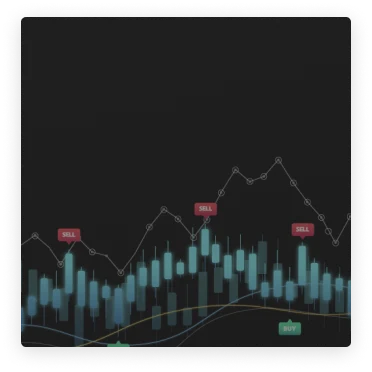#NFT
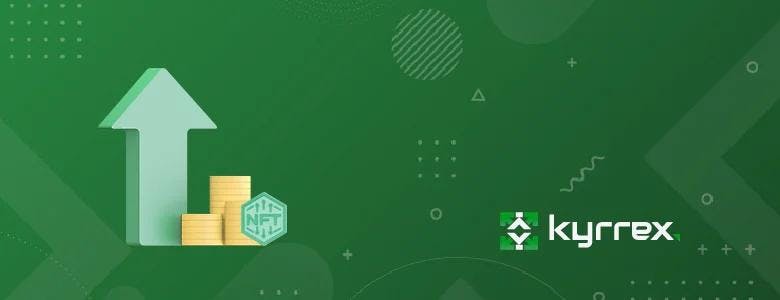
NFT Will Make You Tons Of Cash. Here's How!
Let's not kid ourselves: everybody is in crypto to make money. Be it venture capital or retail investors, the ultimate goal is profits, lots of it. Enough profits to retire for good on some sunny beach in South America.
Okay, fine, there are more noble goals in cryptocurrency beyond the pursuit of more wealth. There's decentralizing the means of exchange away from government and corporation control. There's the building of next-gen internet apps on blockchain technology. There's various novel approaches to finance, games and real estate. And there's the ongoing exploration of the blockchain-based metaverse.
Most people who jumped early on the bandwagon of projects like the above have already smiled to the bank. Cryptocurrency has made millionaires out of many; it will make many more. One of the newest and best ways to accumulate huge gains in crypto is through non-fungible tokens (NFTs).
NFTs combine blockchain tech and the idea of collectibles into a unique token of burgeoning popularity. They're the latest money-spinning method in crypto for those who are savvy enough to take advantage.
In this article, we'll show you six ways NFTs can make you tons of cash:
1- Invest in an NFT collectible
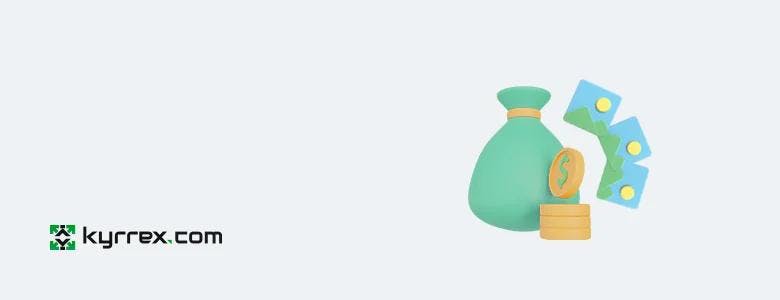
Non fungible tokens manifest mainly as digital collectibles of various types. They are uploaded on special marketplaces where traders can transfer ownership by buying and selling. An NFT marketplace works similarly to a platform like Amazon. Prices are either fixed or the auction method is used.
The big deal about buying a solo NFT or part of a collectible is that you can flip it later at higher prices. Much like you can buy a traditional cryptocurrency like bitcoin and sell it when the price is higher, you can do the same with NFTs. The risk, of course, is that demand for the item you hold might wane, pushing the price lower.
This is why you should research any NFT project before you invest in it. Class-A NFTs like CryptoPunks and Bored Ape Yacht Club might be beyond most people now but there's a ton of other solid collections to invest in.
Again, knowing the right time to pull the trigger and sell off the NFT is key. We don't want to be saddled with a collectible that no one wants to buy.
Once you've decided which non-fungible token to invest in, you can make your way to OpenSea, Rarible or another marketplace and make your purchase. Once you're ready to sell, simply list your item at the price you want. Once someone buys it, the payment will be transferred to your wallet.
2- Mint an NFT
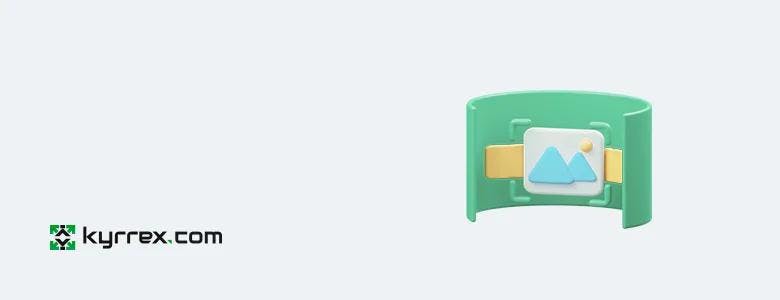
Rather than investing in a collectible, why not mint one yourself? Given that you can create an NFT by yourself, nothing stops you from making cool money by launching your own NFTs. You can either list a single digital collectible or make it a collection.
If you're an artist, you're in luck. NFT artworks are selling like hot cakes with crypto investors looking for alternative ways to spend their profits. With good art and graphics skills and marketing savvy, you can attract publicity to your NFTs and get rich selling them on a marketplace.
Most NFTs use the ERC-721 standard, an Ethereum protocol, to encode information though other networks like PolkaDot and Solana are seeing some use. You need some Ethereum, a compatible wallet, and the items to transform to NFTs, to begin. Head over to a marketplace and mint your collectibles. You can then list them for a price.
Jack Dorsey sold an NFT of his first tweet for $2.9m. You can find takers for your own memorabilia, if they are memorable enough. Photos, videos, music, memes, tweets, artwork, documents and other things can be listed as NFTs. The list is endless.
3- Buy an NFT Token
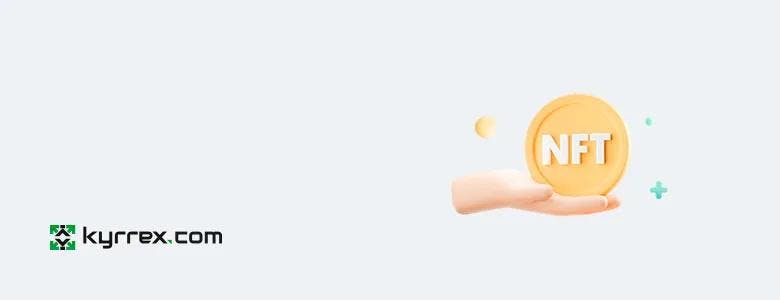
Another way to benefit from the non-fungible token revolution is to buy… a fungible token! In particular, a fungible token associated with NFTs. As the use case for NFTs expand, lots of projects now incorporate these tokens as the central component of their ecosystem.
You can benefit from this by investing in a cryptocurrency linked to an NFT project. As the project gains in popularity and hype, its associated token is likely to increase in value. Game, metaverse and real estate projects have seen their values skyrocket to unprecedented levels over the past year. The trajectory of the NFT space remains upwards for the foreseeable.
You can maximize your gains from NFTs by looking for solid projects still in their infancy and investing in their tokens. And if you'd rather jump on a moving train, there are lots of popular NFT projects in the mainstream. You can bet on their prices going even higher, despite the huge gains they've already made.
We've listed 5 of the most popular tokens associated with NFTs:
Decentraland (MANA)
Mana is the utility token of Decentraland, an NFT real estate platform operating since 2017.
- January price: $0.07
- December price: $3.64
- All time high: $5.90
Axie Infinity Shards (AXS)
Axie Infinity is a trading and battling game on the blockchainthat plays like pokémon. AXS is its governance token.
- January price: $0.41
- December: $105
- All time high: $165.37
The Sandbox (SAND)
The Sandbox is a multilayered NFT p2e platform that provides a 3D environment where users can function as gamers, creators and traders.
- January price: 0.03
- December price: 6.70
- All time high: 8.44
Enjin Coin (ENJ)
Enjin Network is a social gaming platform built to provide the most comprehensive gaming experience on the blockchain, including the use of NFTs.
- January price: $0.12
- December price: 3.03
- All time high: 4.85
My Neighbor Alice (ALICE)
My Neighbor Alice is an NFT multiplayer game on the Binance Smart Chain. Players buy islands, build on them, and simulate other social activities.
- Launch price: 3.19
- December price: 14.20
- All time high: 42.55
Looking at the past and current prices of these and similar projects, it's evident that investing in the right NFT project can be potentially life-changing.
4- Play NFT Games
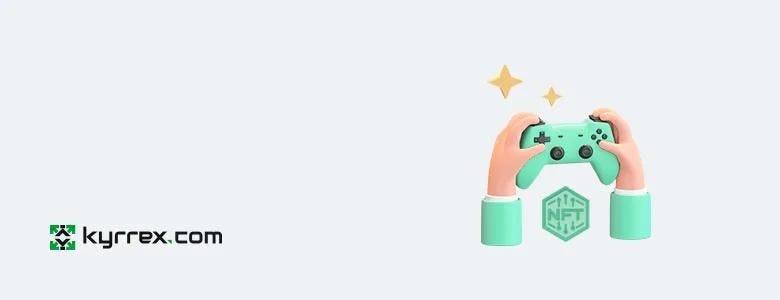
If you're not deep-pocketed, you can still make massive gains from NFTs by engaging in gaming activities on the blockchain. There are literally dozens of crypto-based games offering some form of rewards for productive gameplay.
There are various models of NFT games at the moment. Play-to-earn games reward you in crypto for playing games. This can simply be by completing objectives or by progressing far enough in the game to unlock rewards.
A different model is play-to-win. In this game, users pit their wits against one another and the winners take the prizes on offer. This is a common system in games that use racing and sports elements.
Your rewards for playing games could be a currency like Ethereum, the platform's utility token, like TLM in Alien Worlds, or non fungible tokens which you can either keep or sell. If you're a gaming pro, you can monetize your skills and amass a small fortune from crypto.
To start making money from games on the blockchain, it's better to find a game you like or can quickly learn. Typically, you need some of the platform's utility tokens to start with. These will go into buying the virtual equipment you need.
Here are some popular NFT games you can play and earn from right now:
- SplinterLands: a multiplayer collectible trading card game.
- Alien Worlds: a play-to-earn social simulation game in the metaverse.
- Axie Infinity: a pokémon-inspired game where users breed and battle with virtual pets called axies.
- Farmers World: an innovative P2E farming simulator.
- Star Atlas: a space exploration, combat and community game on Solana with next-gen graphics.
- Bomb Crypto: a virtual universe on the blockchain where players control cyborgs to hunt the in-game token and fight monsters.
- CryptoBlades: a monster-based RPG with solo and cooperative elements.
- Thetan Arena: a player-vs-player multiplayer online battle arena game with various modes gamers can earn from.
- Gods Unchained: one of the most popular card-based blockchain games.
Established NFT games will likely be more expensive to play. If you're a beginner, you can start your NFT earning experience with newer and cheaper games.
5- Buy NFT real estate
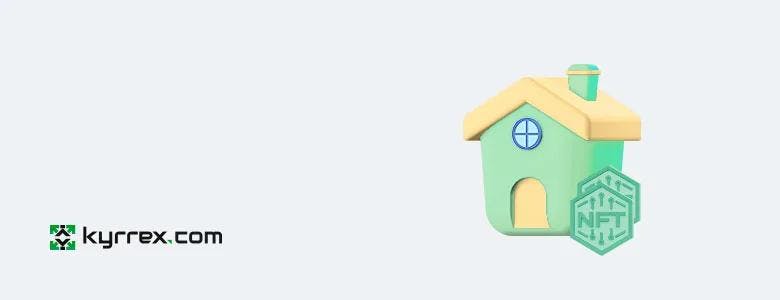
Virtual real estate is looking like the next big thing in the NFT space. You can find them on a decentralized virtual metaverse platform that allocates land to buyers who then go ahead to build whatever they want.
There are dozens of metaverses you can visit and invest in. The metaverse is a persistent 3D universe where you can play, work and socialize using a digital avatar. Imagine taking the dog for a walk, attending a concert and hanging out with friends all while relaxing on the couch in your house.
From an economic perspective, the metaverse has huge potential for the canny investor. You could buy a piece of real estate on a metaverse platform, and sell it for a profit when demand increases. You can even develop it into a virtual garage, cinema, or shopping mall and make money from the building.
If you're excited by the possibilities, you can start your journey on these metaverse platforms:
Decentraland
Decentraland is the most popular crypto real estate platform and by far the most developed. It has over 20 million active users and has already played host to big events like concerts and auctions.
There are 90,000 plots of land on Decentraland and the choicest pieces have been snapped up already. You can visit the Decentraland marketplace to check land for sale. If you find one you like, you need to pay using MANA, the platform's utility token.
Real estate on Decentraland doesn't exactly come cheap. At the current price of MANA, you need around $12,000 to buy a parcel of LAND on the platform.
Upland
Upland is another metaverse platform that deals in virtual real estate. Upland wants to be a digital version of earth. Properties on the platform replicate a real-world address. So you can buy virtual copies of famous places in New York or Los Angeles.
Cryptovoxels
This is another platform where you can buy, sell or develop properties. It's a user-owned virtual world on the Ethereum blockchain. Buyers are encouraged to develop stores, art galleries and other useful structures on their parcels. This platform focuses on art-centric buildings like museums, studios, galleries that can host virtual art fairs or house artworks for virtual tourists to admire.
6- Participate in NFT Airdrops
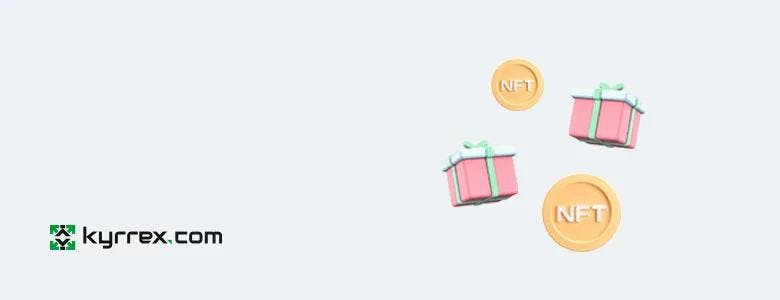
Everybody loves freebies, and if you can flip them for serious money, even better.
You don't have to buy or create an NFT to own one. You can participate in airdrops and similar programs that reward you for your time, followership or promotion with a free NFT.
The Crypto Punks NFTs, for example, were given out for free. Some are now worth millions of dollars. Some popular brands like Pepsi have also held free NFT promotions that can now be bought on OpenSea.
Just like cryptocurrency airdrops, NFT airdrops occur frequently in the crypto world. You can monitor a platform that tracks upcoming drops to learn how to participate. In some instances, you need to fulfil conditions such as holding a certain type of cryptocurrency, to be eligible for a drop.
If you're lucky, you can land a unique or rare NFT that's in high demand and trade it when the hype is loudest.
Conclusion
Contrary to popular opinions, NFTs don't begin and end with collectibles and digital art. It's a fast-moving segment of blockchain tech that keeps evolving with new products and use cases.
This, of course, means newer and better ways to make money. It offers unique opportunities for veteran and newbie gamers alike to monetize their love of friendly competition. Investors can also ride the growing NFT hype train by getting good yields from NFT-related cryptocurrencies or stay with classical methods of investment in Bitcoin or other altcoins like KRRX token.
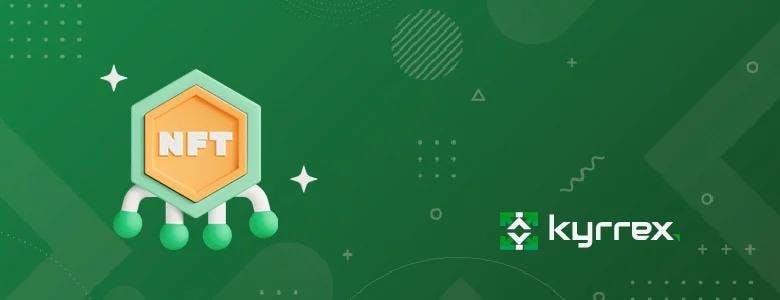
Why Is Everyone Crazy about NFTs?
NFTs (non-fungible tokens) are the new craze. From youngsters still in High School to practicing stock market profiteers, everybody is talking about NFTs. But why? Are they that big a deal? Are NFTs popular because of the earlier craze of blockchains and cryptocurrencies? Is there more to the story than you know? These are good questions. NFTs ought to have special characteristics to measure up to their popularity in today’s low-span-attention world. And they do.
Here are a handful of NFT attributes that set the token apart from the other elements of the blockchain enterprise.
1. Fungibility
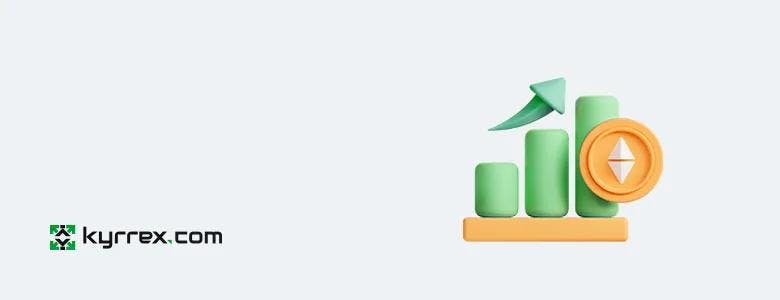
Fungible currencies are designed to be swappable. This means that you can break the average numbered currency into units, and each of these units can be exchanged for the units of other numbered currencies.
Fungibility is why we have the global currency exchange market where specific units of the American Dollar, for example, can be reliably exchanged for certain units of the British Pound. So, currencies like these, as well as Bitcoin, are compatible and can be used—in the same or similar scenarios—to measure the value of an item. NFTs do not conform to this economic substructure.
2. Value Creation and Appraisal
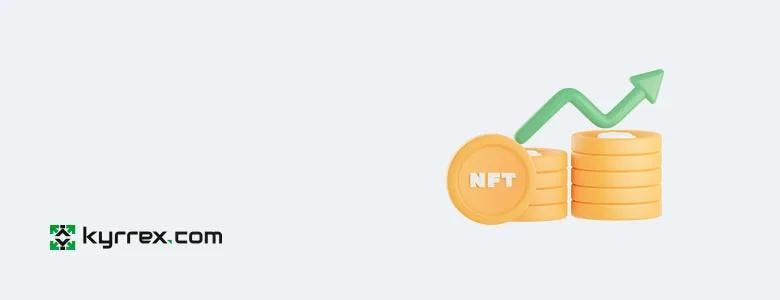
Have you heard about Beeple?
A digital artist known as Beeple created an NFT, Everydays: The First 5000. The NFT consisted of 5,000 different images that were created every day between 2007 and 2021. And what did Beeple use this image for? He sold it. Beeple’s NFT went from $100 to around $1 million an hour after the auction began. You would think that you have crawled down the rabbit hole with Alice into a world of outlandish affairs. No. It is just that times have changed.
Beeple did not have to sit under an apple tree to realize the effects of gravity, nor did they play around with wires and electricity a thousand and one times before inventing the light bulb. The same is true for Jack Dorsey, the former CEO of Twitter who sold his first-ever tweet as an NFT. For $2.9 million. So, with NFTs, you can be creative without being in command of a 200+ IQ. You can be creative and useful—and consequently affluent—by using the things around you. In other words, the process of value creation has changed. The contemporary engines that determine that one innovation is valuable and another is not have been put out to pasture.
NFTs Can be Anything
Another reason NFTs have seemingly become a big deal everywhere is that they can be anything, and therein lies the charm. An NFT’s merit is not limited to its value creation alone, but the fact that it has the potential to ‘soak up’ everything. When the internet went commercial in the early ‘90s, the leading expectation was that its extensiveness and seeming boundlessness will change the paradigm of society, economy, environmental perception, and many more. While the internet revolution has done its bit, it still has some distance to go before really meeting this edge of expectation.
NFTs are sort of a polished evolutionary phase of the internet. Because they are tokens that exist on a decentralized blockchain, they can be redefined in terms of constitution so that they have transferable value. Put simply, as long as something can be digitized, that is, affixed to the internet or typified in electronic form, they can be NFTs. So, yes, the fact that you can ‘absorb’ anything and convert it into NFT of value is one of the bases for the recent craze over NFTs. It is a process that essentially capitalizes on the internet of value to assemble together an internet of value.
So, what can be converted into NFTs?
We have already broadened this characterization of NFTs to include ‘anything’ that can be digitized. The resulting NFT (in digital form) has to be visible, of course, as well as identifiable, storable, and transferable. A mundane specimen would be your birth certificate which you can upload online, convert to an NFT, and keep in your digital wallet.
You can do the same with anything else. As long as you can make them digital and somewhat unique, you can make them NFTs and let them fetch you a lot of money. In fact, whatever you are converting doesn’t even have to belong to you. This is the part where there is a principle of legality behind NFT conversion and valuation.
Even so, the principle is still largely loose and flexible at the moment. So, don’t go converting the ‘NYPD’ brand into NFTs and putting it up for sale. They will come after you. As will every other owner or official user of trademarked items. Thus, when we said anything earlier, we meant stuff like music, video, pictures, poems, paintings, video games, certificates, plants, animals, and more and more.
3. A Different Way of Doing Things
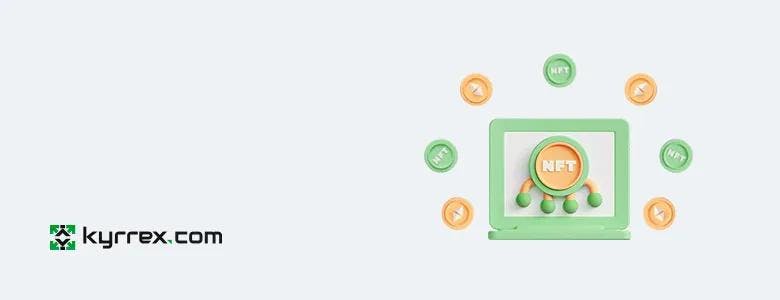
So, the original internet, per our earlier argument, was one of information. Value was built around information. Social connections were built around information. The entire economics of wealth creation and management was built around information. But this generated a new batch of problems. One, considering that information is the core reference for the internet revolution and utility, how can we verify the information on the internet? Two, how can we discourage the proliferation of false data?
This is how the blockchain revolution came up with its principle of networked integrity. This principle is characterized by data and value reliability. Essentially, honesty, consideration, accountability, and transparency are all coded into the blockchain. Ergo, these characteristics do not rely on the people using the blockchain, but on the blockchain’s protocols. So, NFTs are riding on this principle as well. This means that you don’t have to worry about folks that might cause you to pay multiple times for an item or service. The same goes for scams that take your money for nothing.
With smart contracts, you can rest easy with deals you make online. NFTs are the succeeding steps that compartmentalize these contracts and make them into Proof of Work, Proof of Activity, Proof of Stake, etc.
So, with NFTs, we might have found ourselves a way to restack the deck. And this is just its value for social or business interaction.
What about profit-making?
Well, the bulk of what is profit-making in the NFT market is what the public agrees to be worthwhile. This demonstrates the fact that the world has really become a village where public opinion is supposed to count. So, public opinion said that Dorsey’s first tweet ought to sell for approximately $400,000 short of $3 million. And it did. What does this mean for the average individual? New ways to make money! Easy ways to make money! Reliable ways to make money! So, with game-themed NFTs like Battle of Guardians and Sandbox, you can make a killing selling in-game assets from gear to real estate.
4. Sole Ownership Rights

One of the more interesting things about NFTs, as it is presently, is the sole ownership rights it bestows. When you buy an NFT, like the individual that purchased a 50-second video by Grimes for almost $400,000, you own it. This appears self-evident, doesn’t it? But it goes a bit deeper than the traditional acquisition and ownership of stuff.
Say that Leonardo da Vinci’s Mona Lisa is for sale and that you bought it. You own it, don’t you? There are bound to be copies of the artwork elsewhere, but you own the original. NFTs work pretty much the same way, like art collectibles.
When you purchase an NFT of rare digital artwork, for example, you become the owner of said artwork. Your neighbor may have saved a copy of it on their computer, but the entire world knows that you (who bought it for millions of dollars, most likely) are the original owner.
These rights that NFTs bestow are beyond the conventional bragging rights. They allow you to set the price on the NFT you bought whenever you want. So, your neighbor cannot sell that NFT, even if they have a perfectly identical copy. Only you can.
Popular American YouTuber and social media VIP, Logan Paul, put up 15-second clips of an old YouTube video for sale. He wanted $20,000 for it. Several GIFs came out of that deal, with some selling for $3,600. Well, someone bought one of these and after a little while wanted to sell it off at $16,300. So, even though you can download this particular image online, you cannot sell it as the original buyer wants to.
So, NFTs grant you the power of sole ownership, with the added benefits of long-term investments. However, the value of whatever NFT you purchased and now own is decided by the public.
5. Shared Minting Power
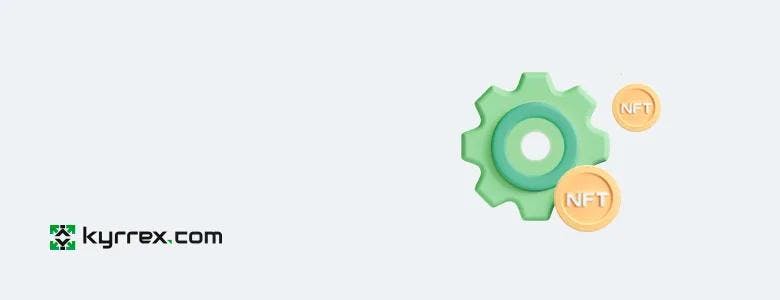
Lastly, NFTs don’t fall from the sky or grow on trees. You can mint them. Moreover, because they are similar to currencies (even though they are not), the fact that NFTs can be minted by anyone and everyone gives them a certain charm. Thus, they are attractive and consequently trendy.
So, what do you need to mint or make an NFT?
You need whatever file you want to convert into an NFT. First, convert it into a generally accessible format like GIF or JPG. Next, get a blockchain wallet. This would hold the NFT and whatever other token you purchase or peddle. Next, you register with a dedicated NFT marketplace (a platform that was specially designed to convert file formats to digital assets). There are lots of these, with the most popular being Rarible, OpenSea and NiftyGateway.
And if you are only interested in buying NFTs rather than minting them, these dedicated marketplaces are your best bet. Do it well and you could make several millions of dollars after one deal. And that is why NFTs are the new best thing. In one way, they can make you very rich before you can say en ef…!!!
If you are enjoying this article, please check out our Kyrrex crypto blog!
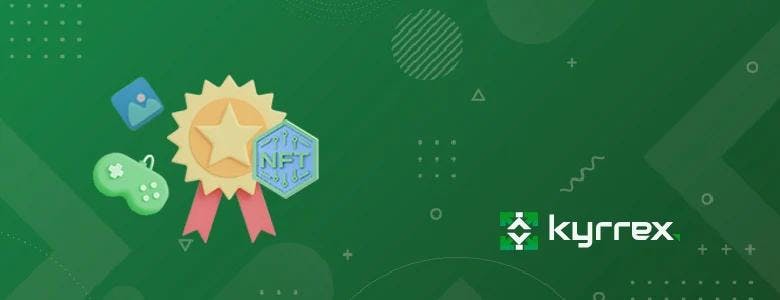
Top 10 NFT Projects to Invest in Today
Non-fungible tokens (NFTs) are the newest instrument for maximizing the novel aspects of blockchain technology and its business applications. The many characteristics of these elements of decentralized transactions suggest that it is reliable, impartial, and likely to propel you to wealth extraordinaire.
Now, while NFT-based projects are generally precious beyond measure, there are more than enough of them to go around. This is especially so for 2022, a year that we are all expecting to be markedly better than its predecessor.
So, we want to present you with something of a solid alibi for clocking your first million, first tens of millions, if hundreds of millions. Not to mention, you might even make a billion dollars if you smartly pit your investment in the following projects against the uncertainties of the new year.
Top NFT projects to invest in today:
1- Art Blocks
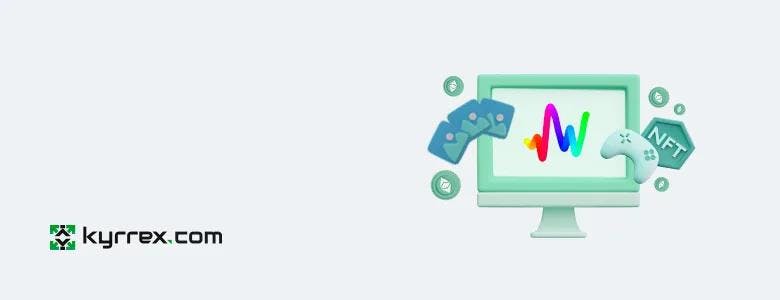
One can argue that the value of art has gone up several hundred steps since NFTs became a thing. This is one of the advantages of Art Blocks, a collection of artworks from/by different artists to leverage their skills and popularity. Compared to its peers, Art Blocks is a generative art NFT, so you can easily build a fortune without a rigid grasp of NFT technicalities.
The mega project is backed by the Ethereum blockchain, so you can say that it has an exclusive home advantage. Moreover, because the artworks are in 2D and 3D, there is a lot of latitude for innovation and progress. This is one of the biggest pros for prospective investors who consider themselves promising digital artists. Art Blocks were introduced into the picture in 2020. Since then, sales on the NFT have ballooned beyond $1 million. To be precise, the number of artworks that have been sold for more than $1 million is almost 50.
Meanwhile, Art Blocks is one NFT project that is expected to stay on the high trend with increasingly reliable—if long-term—valuation. So, this is something for the long haul, not an NFT project for the faint of heart.
2- CryptoPunks
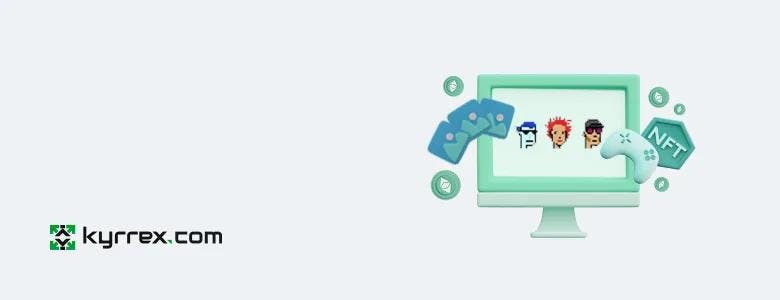
CryptoPunks is in a class of its own among NFT projects. The reason for its reputation is not unrelated to the fact that it has been around since 2017 and has become a favorite among many visionary NFT investors. But this does not mean that the value of the project will take a plunge anytime soon.
CryptoPunks was also launched on Ethereum, so it has been running on the blockchain’s momentum. If you know anything about NFTs, you know that their popularity—and subsequent valuation by the public—forms the basis for half its power. The other half is formed by the original blockchain that thrust it to fame. At its core, CryptoPunks is characterized by 10,000 virtual punk characters. In other words, this number of punk characters is fixed and was computer-generated. Each of them is unique, with distinguishing characteristics. This is why all 10,000 are ideal collectible items that you should invest in. We say this because someone made a killing when they sold their CryptoPunk for approximately $532 million (the equivalent of 124,457.07 ETH).
CryptoPunks was one of the top NFT projects that won the attention of NFT whizzes and newbies in 2021. Considering how optimistic these folks remain about it, you can be sure that the project will remain on top throughout 2022.
3- Axie Infinity
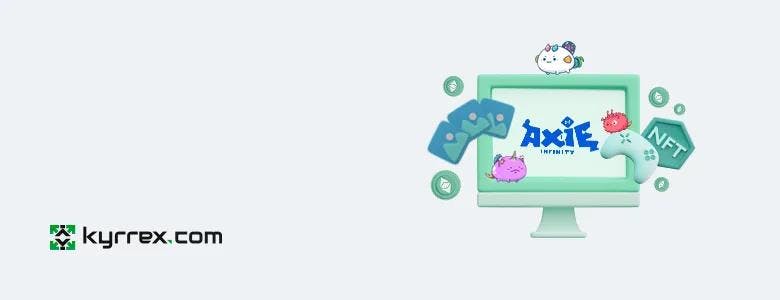
Besides the fact that NFTs are permanent and allow you to leverage the benefits of digital ownership, practically anyone can participate. NFT projects are not only for digital artists and content creators but also for buffs of more relaxed pursuits. Like gamers. This is where a project like Axie Infinity is the bomb.
Axie Infinity is a favorite among online gamers because they can get their hands on the token while they play the trendy game. In other words, you wouldn’t need to go through a crash course on YouTube to learn how to make an NFT. You can simply thrive where others are still ‘cracking the code’ by doing something enjoyable—playing a game.
You see, compared to other NFT-based projects, Axie Infinity is easy to mine. Any gamer can make good money from investing time and effort in their game sessions. Thus, you can collect a treasure chest of the Axie Infinity Shards (AXS), the primary token, and trade them for other cryptocurrency tokens, among the many other things you can use AXS for. Think about it: if you can trade tokens that cost around $75, and you can get these tokens from essentially managing virtual creatures, what are you waiting for?

Play to Earn: Top NFT Games to Earn Crypto
For a long time, decentralized Finance (DeFi) took all the attention in the crypto space. Now there's a new kid on the block: GameFi. The crypto GameFi sector is already worth billions of dollars, fuelled by the hype around play-to-earn innovations and the metaverse.
Many people are making big bucks from NFT games and you don't have to be an exception. The biggest crypto games have already amassed millions of dedicated players. You can join the fray by buying their utility tokens and pitting your wits against other players. If you're good, you can earn a steady stream of cryptocurrency rewards which you can then sell on an NFT marketplace, or on an exchange.
For newbies to the scene, knowing what NFT games are and knowing how and where to buy chain games crypto is important.
What Are Crypto Games?
Playing NFT games has become a legit source of income. These play-to-earn crypto games blend gaming on the blockchain with a reward economy. Players are rewarded with real money for progressing through game levels, winning contests, or simply playing the game.
In traditional gaming, experience points and game assets like weapons, skills and skins have no monetary value beyond the game. In P2E games, you can sell your tokenized game assets (NFTs) for real money. Their value also obeys the standard laws of demand and supply.
Aside from the game assets, playing games can also net you liquid rewards in form of the in-game utility currency. For the more popular games, these tokens are already listed on exchanges so you can sell them off easily for cash. Moreover, the game sector in crypto keeps expanding so you can hold and stake the tokens to earn even more and sell at higher value.
All NFT games are built atop existing blockchain infrastructure. The Ethereum blockchain remains the most popular crypto network for GameFi. Others like Binance Smart Chain, Solana, and Flow also play host to significant crypto game projects.
How to Buy Chain Games Crypto
Most of the NFT games out there require users to have either the native token of the blockchain or the utility token of the game, to begin. This begs the question of where to buy these tokens.
For blockchain tokens like Ether, Solana, KRRX and BNB, you can easily buy them from a centralized exchange. You can also get them from chain-focused decentralized exchanges using the compatible version of a stablecoin like USDT, USDC or BUSD.
What about the in-game tokens? If you're wondering "where can I buy chain games crypto?", wonder no more.
Some game utility tokens can be bought from popular centralized exchanges. They are very popular and have outgrown their original game ecosystem to become normal cryptocurrencies for investors and speculators. Examples are Axie Infinity (AXS), The Sandbox (SAND), Rune (RUNE) and Decentraland (MANA).
Some other NFT games are still in the early stages of development and/or are less mainstream in the crypto world. Most of these can only be bought on niche exchanges like Gate.io or decentralized exchanges linked to the native blockchain platform.
Once you've got your tokens, the next step is to visit the website of the NFT game and start competing with other players.
Top NFT Games to Earn Crypto
Here are seven popular blockchain NFT games that offer players the chance to earn big rewards.
1- Axie Infinity
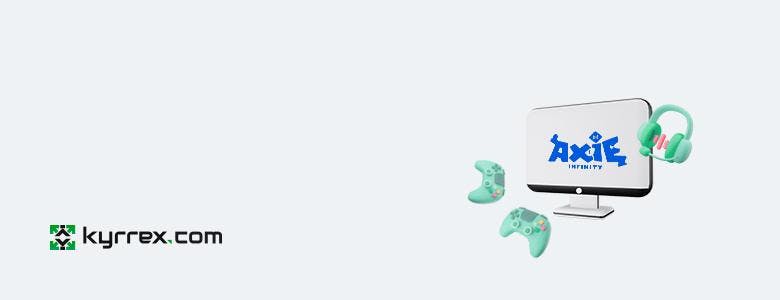
P2E games already existed on the blockchain but the rise of Axie Infinity took things to a whole different level. Axie Infinity is one of the top NFT games inspired by Pokémon.
The social-style game is built atop the formidable Ethereum blockchain. It has two associated tokens, Axie Infinity Shards (AXS) and Smooth Love Potion (SLP). AXS is the governance token that gives holders the right to take part in community decisions. SLP is the main in-game currency akin to experience points. Users require SLP to breed new digital pets, or axies. Each level of breeding requires extra SLP tokens, up to 2100 tokens for the seventh and final breeding level. Some AXS is needed as well to begin.
Axie Infinity is the most popular method to earn crypto playing games right now. It has more than a million users and generates one of the highest gaming rewards. Players compete with one another with their team of unique NFT-based creatures called Axies. There are two main completion modes. The Arena mode pits players against one another while the adventure mode involves fighting enemies and progressing through levels.
What sets Axie Infinity apart is its interesting take on P2E dynamics. Each level of breeding creates new Axies that are essentially "descendants" of the previous ones and inherit their "DNA".
Competing isn't the only way to earn money from this game. You can also trade Axies in the game marketplace. The rarer and most unique ones change hands for sizable sums. If you get lucky, you can obtain rare parts to breed axies and either keep or sell.
2- Gods Unchained
Ethereum-based game, Gods Unchained, is perhaps the most popular free-to-play NFT game out there. While many crypto games integrate P2E mechanics right from the beginning, this card-based game allows users to jump into the experience for free.
The core game system is based on players competing with a deck of cards. There are two cards in the game: core cards and genesis cards. Core cards can be acquired by players simply by playing the game and winning battles. Players who want to advance more quickly can buy card packs from the game marketplace. These are called genesis cards; they were sold before the formal launch of the game. So, if you want to skip grinding in the game, you need to buy a genesis card pack from someone else.
Gods Unchained is built atop the Ethereum layer-2 solution Immutable X. The game uses Ethereum for trading on the marketplace. Cards are priced by rarity.
The low barrier to entry makes Gods Unchained one of the best crypto games for beginners. You can learn the basics of NFT games at your own pace. No pressure to beat other players or open your wallets to join in the fun. You're matched with gamers at your own level. Beat them and you gain more XP and move up a tier. When you level up, you're welcomed with a brand new pack of cards which you can use to do battle with others at this new level.
However, to fully immerse yourself in the game experience, you need to have some GODS tokens. GODS is the native token of the game and required to craft NFTs. You can also use it to buy stuff from the marketplace or stake it to earn more rewards. And if you love the game and wish to become a long-term player, GODS token gives you the power to join community governance and provide input into the game's future trajectory.
3- The Sandbox

The Sandbox is a 3D crypto virtual universe where players can create and trade virtual assets. The Sandbox is one of the most hyped NFT universes that promises a beautiful and profitable metaverse experience for players.
In the Sandbox, players can create their own virtual games and set the rules and rewards. This makes the platform a kind of hybrid game creator kit blended with crypto NFT mechanics. It's a vibrant, vivid landscape of self-expression where users can test the limits of their own imaginations.
Anyone can mint, customize, trade or utilize voxel objects in the Sandbox universe. A voxel is a unit of three dimensional graphics. The open world of the Sandbox features 3D NFTs.
If you've ever wondered what Minecraft or Roblox might look like on the blockchain, look no further than this game. Here, you can create games within games and worlds within worlds. Everything runs on the powerful Unity engine that renders everything in crisp-smooth graphics.
Like some of the other popular game projects, the Sandbox is built on the Ethereum blockchain. Every default or created NFT in the game is an ERC-721 token. Creators can upload their creations to a compatible marketplace. The Game Maker tool enables them to add NFTs to a template and fashion custom gaming experiences.
The world of The Sandbox is divided into units of LAND. Players can buy land and develop it in any way they want and sell it when the value appreciates. Sand is the utility token of The Sandbox. It is used to buy land and assets in the game marketplace.
The value of the Sand token is trading around 5 dollars, up 17,000% year-on-year. This comfortably places it among the top 3 crypto game coins and reflects the enduring hype around The Sandbox.
4- Star Atlas
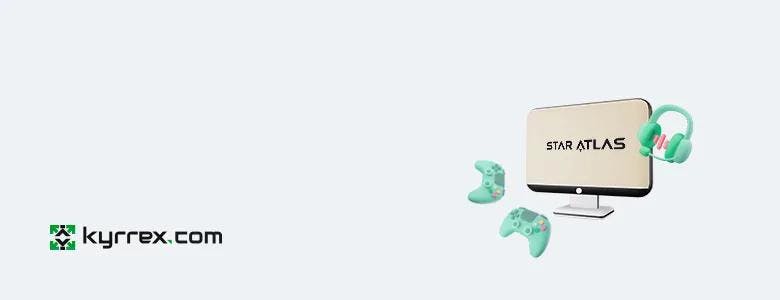
Bring an online multiplayer, a space thriller, the blockchain, DeFi and Unreal Engine 5 together and you get Star Atlas. This game is one of the most anticipated creations in blockchain gaming history. Every trailer to date spawned paroxysms of excitement among fans drooling at the promise of high-octane action rendered in cinematic quality.
The developers of Star Atlas claim it will be a grand strategy game of space exploration, territorial conquest, and political domination. There's no reason to doubt their intention based on what's been released so far. You can join one of three factions, take command of a spaceship, and cruise around deep space. You will encounter friends, enemies and rival organizations; hunt for legendary relics in obscure planets, witness alliances forged and epic battles for control of strategic planets and space regions.
During your voyages, you'll come across assets which you can keep for yourself, upgrade for use, or sell on the Galactic Marketplace. You can fly solo or join a player organization to overwhelm opponents through strength in numbers. Ships, suits, power stations and other tools can be upgraded to increase your chances of becoming the lord of the skies.
Star Atlas has two in-game currencies. The first, ATLAS, is used to buy and sell in the Galactic Marketplace. NFT game equipment like ships, suits and weapons can be exchanged for ATLAS. The second token, POLIS, will function as the currency of player-created in-game space cities.
5- Alien World
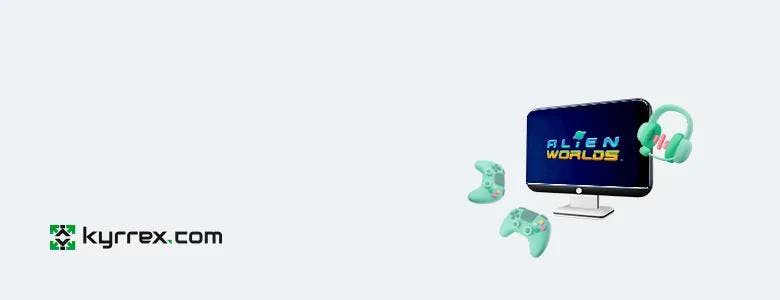
Alien World is another popular P2E platform that incentivizes gaming on the blockchain. It's a decentralized NFT metaverse where players try to outfox each other to acquire scarce resources.
Like Star Atlas, Alien Worlds revolves around planetary space exploration. Unlike Star Atlas, the action elements are more muted in favor of strategy and role-playing elements.
In this blockchain browser game, you are an adventurer and acquiring Trilium is your goal. Trilium, or TLM, is both the utility token of the game and the scarce resource. players fight over. You're expected to navigate to distant planets to mine TLM and collect rare NFTs. You can sell NFTs on the marketplace and stake or sell your TLM on an exchange.
6- Illuvium
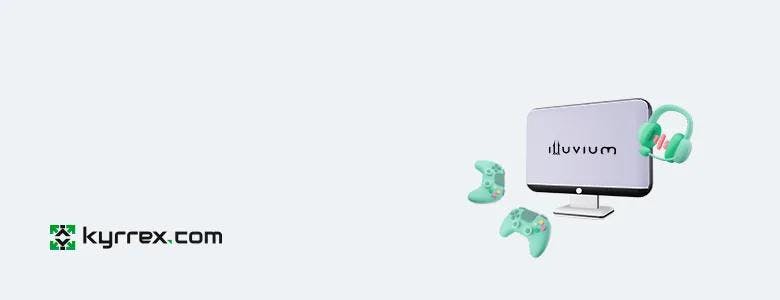
Illuvium is one of the most popular games on the Ethereum blockchain. It combines features of traditional exploration games with online PvP and P2E elements to create a virtual world where players battle each other and strange creatures known as illuvials.
Illuvials are the residents of the world of Illuvium. Players need to battle, defeat and capture them. Thereafter, each conquered illuvial becomes a part of the player's team and will fight for them against other players.
The game rewards players for exploring and capturing various exotic beasts and developing them into a powerful winning machine. Player winnings increase as they defeat others and climb the leaderboard. The utility token, ILV, is given to players based on their achievements and can be sold on cryptocurrency exchanges.
7- Splinterlands
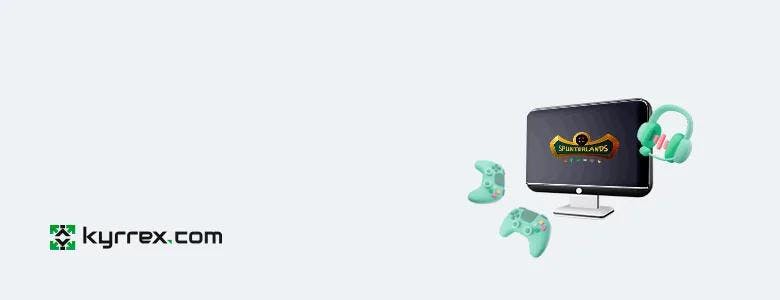
This game is another addition to the growing list of free-to-play card games on the blockchain. Aside from being one of the most popular crypto games for card lovers, Splinterlands operates on its own customized blockchain. This gives it a high degree of stability. Moreover, it is a cross-compatible game that works on the Ethereum, Tron and WAX chains, increasing exposure and playability.
Similarly to Gods Unchained, you earn rewards in Splinterlands by winning card matchups. Once you've bought your starter card pack, you can start earning rewards by participating in different activities like daily quests, ranked play, and tournaments.
There are around 300 unique cards in the game and you may be lucky to get one of the rare ones on your first purchase. You can combine cards for power boosts. You can also use cards with different stats together to achieve different effects. You can join one of the factions in the game and unleash special abilities to defeat opponents.
NFT Games at a Glance
There are several types of NFT crypto games and knowing them will give you a better idea of where to start your blockchain gaming journey.
Play to Earn NFT Games
This is now the dominant type of game in the crypto space. P2E NFT games invite the player to play and earn rewards. Despite little variations in the setup, all games in this category attract users by adding a monetary incentive to winning battles, scaling levels, and progressing through the game.
Free to Play NFT Games
Free-to-play games may or may not feature P2E elements. Their main distinction is the zero barrier to entry. A F2P game like Gods Unchained doesn't need the player to pay or buy anything to start. The player gains in-game assets as they move through the game. However, they can choose to buy game packs to speed up their progress.
Play to Win NFT Games
Play to win is a niche category that caters to players with a win-at-all-costs mentality. In this type of game, the best in-game tools that offer the highest chance of winning are put behind a paywall. Users must spend from their pockets to acquire these items or else get stuck grinding on the lower levels.
Looking Towards the Future
Each day brings a new crypto game trying to take advantage of the GameFi and metaverse hype. NFTs, having found a use beyond simple trading, are playing a more prominent role in crypto. Players all over the world have turned to P2E games to find that perfect blend of work, play and profitability.
Needless to say, as more attention turns towards this space, early adopters are primed to make the most gains. And as the most popular crypto games get more exposure, the barriers to entry for a newbie get progressively higher. For a first timer to blockchain gaming, it might be better to give the highest ranked games a wide berth at the beginning. You can instead hone your play-to-earn skills in games that are free to start or cheap to get into.
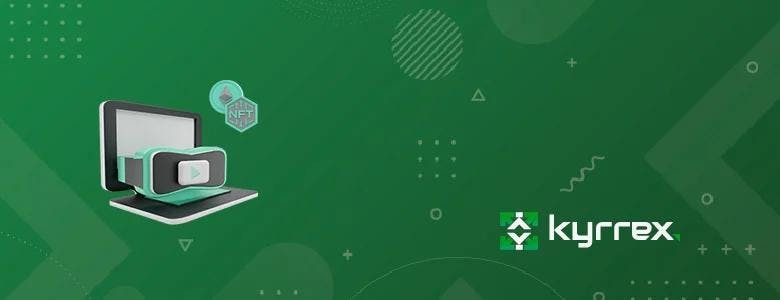
Meta Universe: Virtual Gaming, NFTs and the Currency Question
Blockchain technology is the gift that keeps on giving. The original goal was simple: a fast and censorless way to digitally transfer value from person to person.
Soon, it became clear that the blockchain is the window to a brave new world of decentralized innovations. Smart contracts followed, along with the ability to issue new tokens on an existing blockchain's protocol.
So far so good, but what really took things to a whole new level were NFTs, or non-fungible tokens. These tokens represent ownership of a physical, digital or virtual asset and each one is unique and cryptographically distinguishable. An NFT can stand for virtually anything—property, a meme, an activity, art, you name it.
NFTs became the anchors for virtual gaming on the blockchain. Blockchain-based games, in their various guises, use NFTs as in-game characters, land, loot, weapons, cards, and other game assets.
The latest games using Web 3.0 technology like Axie Infinity, CryoWar and Star Atlas, blend the current trends in blockchain—DeFi, DAOs, NFTs—with traditional gaming to create fully-developed play-to-earn experiences for digital natives.
This synthesis of gaming elements with core cryptocurrency mechanics defines what is now known as GameFi. GameFi are crypto games with some kind of token economics. Players earn in-game currency as they progress and can convert their winnings to other cryptocurrencies. They can also trade, rent or exchange their assets with other players, depending on the game.
The Metaverse
Just like online games are merely one aspect of the overall Internet experience, GameFi is just one segment of the new virtual world powered by blockchain. A crypto game like Mines of Dalarnia creates an action-adventure universe where players can fight enemies, mine new weapons and gear and farm collectibles. But what if you can do other things, besides gaming, in this virtual world?
Welcome to the metaverse.
The Next Big Thing in Crypto?
The metaverse is a catch-all term for the proposed next stage of the internet. It is, or will be, a fusion of web 3.0, distributed ledger technology, decentralized virtual ownership, and financialized virtual worlds. It is a space shared by all the newest virtual worlds, and accessible through VR headsets, AR glasses, smartphones, PCs, and game consoles.
The crypto metaverse is a persistent 3D environment that mirrors reality up to the limits of the specific platform. You can create an online identity unique to yourself alone. You can acquire the NFT metaverse platform's main asset and keep, share, loan or display it as you see fit. Different metaverse platforms have different mechanics but they all obey one central axiom: decentralized ownership of assets.
Metaverse is a hot cake in the industry right now. Many metaverse-affiliated crypto tokens have seen stupendous rises in the fourth quarter of 2021. AXS (Axie Infinity), SAND (The Sandbox), GALA (Gala Games), MANA (Decentraland), ETERNAL (CryptoMines), MBOX (Mobox) and PYR (Vulcan Forged) witnessed hefty increases in valuation as new platforms exit beta and fresh investors jumped on the virtual world bandwagon.
Even traditional tech giants don't want to miss out on the fun. Facebook recently changed its name to Meta, underlying its ambition to become a key player in, if not dominate, this emerging sector. Not to be left out, Microsoft is making plans to join the virtual world revolution.
Though GameFi is currently the most prominent iteration of the metaverse NFT experience, it's in fact a relatively recent development. A brief look at one of the earliest NFT metaverses will clarify the concept.
The Example of Decentraland
Decentraland is a virtual reality universe that pioneered the blockchain-based metaverse concept. It uses distributed ledger technology to operate a 3D virtual environment. As the name suggests, it's a decentralized platform that sells land. Users can buy plots of land and do whatever they want with it. They can treat it as investment, wait till the value of the land appreciates, and sell it off. They could also develop any kind of property on it and rent the property out while retaining ownership of the land.
Transactions on Decentraland utilize the native metaverse token, MANA, which is based on the Ethereum Network. As the metaverse hype reached its Zenith in 2020-21, the value of MANA has increased by more than 500%. The same goes for the valuation of real estate in Decentraland. Prices have skyrocketed by more than 5000% since parcels of land first went up for sale in 2017.
Metaverse Mechanics
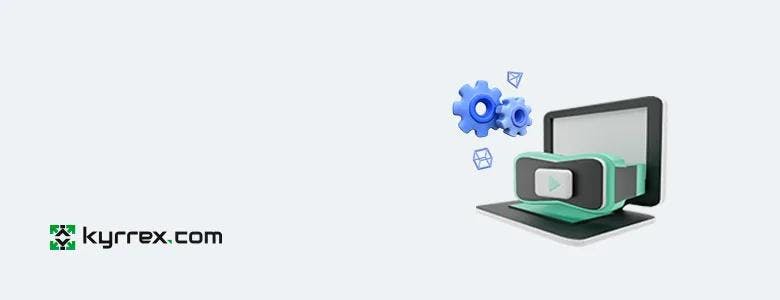
Metaverse is a portmanteau of Meta and Universe. As currently understood in the crypto space, the metaverse democratizes the virtual experience and broadens access to gaming, social and other worlds for the ordinary user.
Even though the metaverse is still in its infancy, the broader concepts that all NFT metaverse platforms operate by have been fairly well established. Let's go over some of the features of the next generation of the blockchain revolution, especially compared to real-life practices.
Metaverse Currency
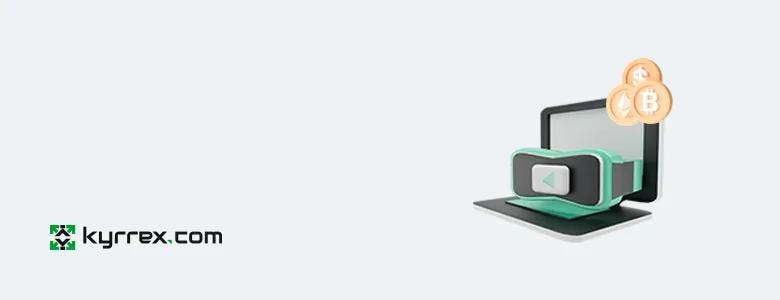
What is a metaverse currency, you might wonder. Simply put, it's the in-world currency for a virtual platform. In the blockchain space, this refers to utility tokens of virtual-world platforms.
In the real world, we spend legal tenders on goods and services. We pay value in return for products of equal value. What qualifies as acceptable currency in one country might not be accepted in another.
Things are a bit similar, but also different, in the metaverse. On any specific metaverse platform, there's one single "universe" which all virtual residents belong to. Everyone buys and sells using the utility token of the metaverse. In The Sandbox metaverse, users pay for trades in SAND tokens.
On the other hand, the metaverse shares similarities with the current political system of countries with their different economic models. Despite, or perhaps because of, the centerless nature of NFT-based worlds, each platform has its own rules and tools with little to no crossover.
A user in The Sandbox cannot move their LAND asset over to the Axie Infinity universe. Nor can they purchase assets on Axie with the SAND token. This is so even though both platforms are based on the Ethereum network.
The same restriction applies for cross-chain crossovers. Much like you need to convert your local currency to US dollars to buy stuff in the United States, you must hold the token that a virtual world supports to live, work, relax, perform or play games there.
According to DappRadar which tracks crypto data, there are currently over 1200 blockchain games. Most of them have their own utility tokens which users need to join the in-game world.
Metaverse Growth and Prospects
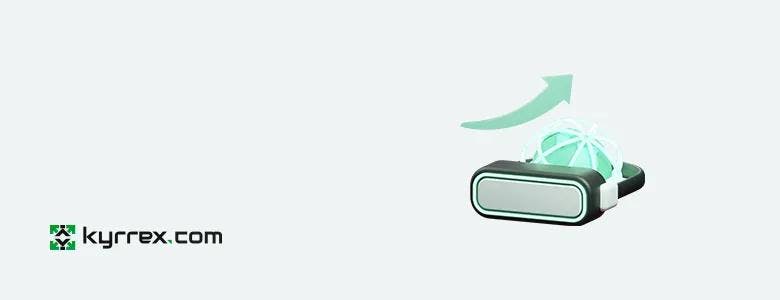
Data from crypto research firm Macro Hive shows that a basket of metaverse coins rallied 37,000% in 2021, an eye-popping increase whichever way you slice it.
Though the basket contained just 5 coins—Axie Infinity, Decentraland, Sandbox, Enjin Coin, and GALA, the findings apply broadly to most serious blockchain-based virtual world tokens.
This implies that the metaverse is only going to keep growing as new technology emerges that brings the world closer to the dream of a fully-realized VR experience. It also signifies investors' confidence in the long-term prospects of decentralized virtual reality innovations.
Everyday, new entrants arrive on the scene as people try to replicate the success of Decentraland and Axie. Though there will assuredly be more duds than success stories, the trajectory keeps moving inexorably in favor of middleman-less mixed-reality experiences.
Can There Be a Single Metaverse?
There is just one single internet but a multitude of websites and online experiences based on it. This seems to be the way the metaverse NFT experience is going. Initially, there was talk of creating a single super virtual universe, where everyone can work, live, and have fun.
The proliferation of different projects, all using the metaverse moniker for hype, makes this a tall order. It's more likely that the current status quo is maintained. Blockchain will remain the backbone for multiple metaworlds with unique selling points for users.
The Holy grail of new virtual worlds would be free movement across the crypto metaverse. This doesn't look feasible anytime soon, because of how the underlying blockchain networks operate. Currently, most distributed ledger networks are not cross-compatible. Transferring tokens across blockchains needs special platforms called bridges.
Perhaps in the future, bridges would be automatically integrated into every metaverse platform. Then users can freely move their avatars and assets across virtual worlds without even thinking about it.
What Will We Spend in the Metaverse?
This looks like a simple question. Of course, we will spend the utility token of each virtual ecosystem. Players in Alien Worlds, for instance, need to obtain the in-world currency, TLM, to acquire and upgrade their crafts.
But this question is worth asking again in a broader and more long-term perspective. The metaverse just isn't about creating virtual social systems, it's also a test case for the enduring utility of cryptocurrencies.
According to Haim Israel, a strategist for Bank of America, the metaverse is where people will really start using crypto as currency. Which begs the question: Which cryptocurrencies?
With most fiat currencies in the world, what you see is what you get. You know what to expect from them, the rough value you can obtain from a unit of the currency. You know that if the value of the money rises or falls, it will do so slowly.
This isn't the case with cryptocurrency tokens. The industry has moved so far away from its original goal as a decentralized payment system (although some coins are still that). Now, most major crypto coins serve another role as investment assets.
Digital currencies in general are just so volatile. They can fall rapidly and rise at unbelievable speeds, to absurd levels. Ideally, a currency is expected to be more or less stable. Hence, there are problems with the existing metaverse payment model.
Take a popular token like SAND. It's current value is in excess of 5 dollars. This is from less than 4 cents at the beginning of the year. As it keeps increasing, the cost for new users to join the Sandbox ecosystem by buying LANDS keeps rising. This can and will discourage many people from joining.
On the other hand, if a bear market strikes and the token takes a sharp fall, the rewards for performing activities on the ecosystem will also reduce in value. This will disincentivize many people from using the platform. Whether the token rises or falls, there's always a catch.
So, to reframe the question, what will we spend in the metaverse in the future? To keep everyone happy, what should we spend?
NFTs as the Metaverse Currency
Can NFTs act as the currency of the metaverse? This scenario is unlikely, for several reasons that should be fairly obvious.
First, NFTs aren't fungible; currency is. A fungible token is divisible, and all equal units are identical. An NFT has cryptographic properties that make it unique from every other NFT out there. Or so goes the theory.
NFTs are also digital representations of something. They're always (audio)visual. They kind of have to be. In contrast, you don't need to actually see money to spend it, whether in the real or virtual world.
We already noted that the lands, avatars, characters, weapons, buildings, and other assets in these virtual worlds are actually NFTs. Now imagine using your land or car as a currency. It would be an absolute nightmare.
Stablecoins to the Rescue
The aforementioned Haim, who is head of global thematic investment strategy at BofA, suggests that some type of stablecoin is needed.
This looks to be the most sensible solution for all. Stablecoins are a type of crypto that mirror the value of a (strong) fiat currency, such as the US dollar.
This type of coin will bring stability to the metaverse. People will know what their rewards for participating in virtual-world activities will be. New entrants will also know how much they need to pay for assets. The value-cost tradeoff will encourage persistent activity. The value of assets can still rise or fall, but more organically than the current system allows.
More importantly, it's easier to use a stablecoin across multiple blockchain networks because of their inherent stability. Hence, this type of crypto can help to unite the various NFT metaverses into one self-sustaining system.
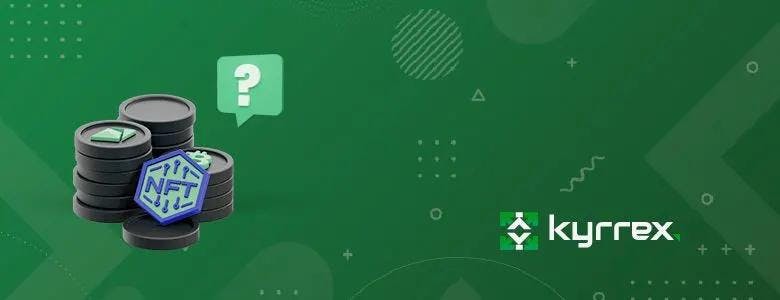
What Are Non-Fungible Tokens (NFTS) And Their Difference From Cryptocurrencies?
While blockchain technology is redefining the financial space, it’s also disrupting other aspects of human life. NFTs are the new craze in town. They’re changing how we view ownership. These digital assets are selling for millions, with a market size well over $2 billion. In this article, we’ll unpack the NFT phenomenon. You’ll find out what they are, their uses, how to mint and trade your own NFTs, and everything in between.
NFT meaning
To understand the meaning of NFTs, it would be a good idea to know the difference between fungible and non-fungible assets. Fungible assets can be substituted with similarly valued assets, like money. However, non-fungible assets cannot be interchanged. For example, you can loan a friend $20, and when they pay back, they can return the same value in four $5 notes. Other assets like Bitcoin or stocks are also fungible. For instance, one Facebook share is equal to another, and 1 BTC on your wallet is the same as another wallet.
Non-fungible assets, on the other hand, have unique properties that you can’t substitute. This means there’s only one specific item in the world. A non-fungible asset could be the original version of a painting or a house. Take the Mona Lisa or van Goh’s The Starry Night, for example. You can reprint them or take pictures, but they’ll only have one original version. Now, non-fungible tokens can be seen as digitized proofs of ownership for physical or digital assets. They’re unique tokenized assets issued on a blockchain. You can buy and sell them like other real-world assets like property or paintings.
Buying an NFT means transferring ownership of the underlying asset to yourself. This could be art, music, domain names, or houses.
NFTs have the following characteristics:
- They cannot be substituted or replicated
- They’re permanent
- They can’t be counterfeited
- Ownership is easy to verify
Like cryptocurrencies, NFT transactions are stored on a blockchain or distributed ledger. This makes it difficult to forge them or falsify ownership. Instead, you only have to look at the blockchain to know who owns a particular non-fungible token.
Differences Between NFTs and Cryptocurrencies
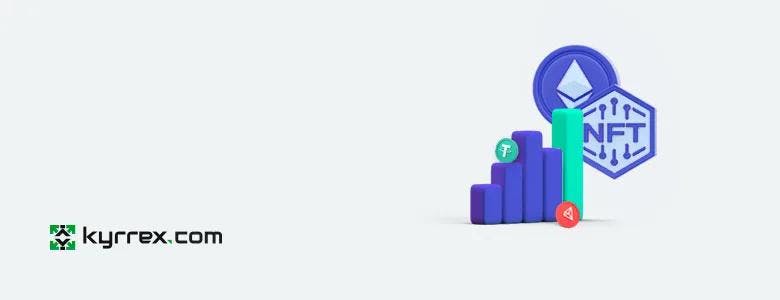
While NFTs and cryptocurrencies exist on the blockchain, they are not the same. Cryptocurrencies are cryptographically secured digital assets that have no difference from each other. For example, 1 ETH is the same everywhere and can be exchanged for other currencies, like Bitcoin. However, NFTs are non-interchangeable assets that are also secured by cryptography. Therefore, one NFT cannot be substituted with another NFT, and they can’t be exchanged.
How NFTs Started
The first-ever group of NFTs appeared on the Bitcoin blockchain. They were called “The colored coins.” They were used to prove ownership of real-world assets on the blockchain. Fast-forward to 2014. Counterparty was born. The company was founded by Adam Krellenstein, Robert Dermody, and Evan Wagner. The platform is a distributed, open-source protocol and peer-to-peer financial platform that leverages the Bitcoin blockchain. The company created a decentralized exchange where people could create and trade assets.
In 2016, the developers of the game Spells of Genesis partnered with Counterparty to create in-game assets and a currency known as BitCrystals. After that, Force of Will, a trading card game, partnered with the company to launch their cards on the platform. These moves signaled the value of Non-Fungible Tokens. Later, different Ethereum standards, known as ERC-721 and ERC-1155, were introduced for NFTs. This is because tokens on the ERC-20 network are allowed to interact with themselves and are indistinct from each other.
The NFT boom – Why are NFTs so Popular?
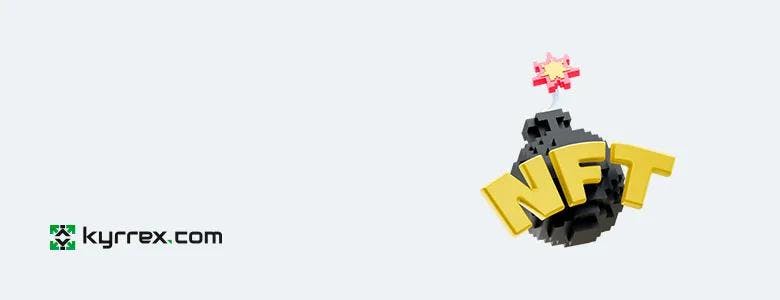
Saying that NFTs are popular is an undersell. Everyone conversant with the crypto community knows about these digital assets. Every exchange now offers NFT marketplaces, and NFT platforms are springing up daily across blockchains.
Examples of record-setting NFT sales are still mind-blowing.
- Beeple, the digital artist, sold the piece called “Everydays: The First 5000 days” for $69.3 million.
- Jack Dorsey, Twitter’s CEO and co-founder sold an NFT of his first tweet for over $2.9 million.
- One LeBron James basketball clip sold for more than $200,000 as an NFT.
- A 2011 GIF of a cat, called Nyan Cat, sold for almost $600,000
The first six months of 2021 saw the NFT market volume grow to more than $2 billion, up from $94 million in the previous year. Apart from the headlines made by the expensive NFT sales, companies like Cloudflare and Twitter fed into the hype by making NFTs seem more legitimate. The former marketed Non-Fungible tokens to its clients and announced that its streaming service, Cloudflare Stream, will now support NFTs. This means any video on stream can have an NFT contract showing ownership on a blockchain.
Also, celebrities like Jay Z, Katy Perry, and Shaquille O’Neal have all jumped on the NFT bandwagon. What’s more, the NBA now has a dedicated marketplace where it sells NBA video snippets as NFTs. Other big brands like Marvel have launched theirs, and companies like eBay and Dolphin are getting in on the action.
Taco Bell and Charmin hosted auctions to sell themed NFT art. It only took minutes for Taco Bell’s NFT to sell out 1.5 wrapped ether (same value as 1 Ethereum).
Will NFTs Fail?
In reality, you can search for the Nyan Cat GIF and download it on your computer. The Beeple JPEG that sold for $69.3 million can be found and viewed on the Internet. And you can always watch the LeBron James clip whenever you want to. The only difference between you and the owners of these NFTs is that they have verifiable ownership rights to these digital items, just like owners of original art pieces. While skeptics call NFTs a giant bubble waiting to burst, proponents see it as a revolutionary way to own digital assets.
How to Invest in NFTs
If you want to jump on the NFTs train, it’s your lucky day. We’ll be showing you how to buy NFT tokens, mint your own NFTs, and the best NFT investments to explore. You can mint your own NFTs, put them up for sale, or run an auction. You can also buy upcoming NFTs and flip them for a profit. What’s more, if you’ve been asking, “What is an NFT stock?” or “What are NFTs stocks?” you’ll find all the answers you’ve been looking for.
How to Buy NFTs
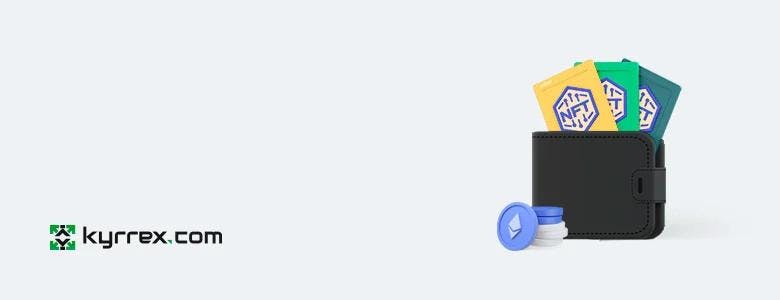
Whether you want to enter NFT trading or own some of these assets, you’ll have to know your way around purpose-built NFT marketplaces. However, before we get too far, there are essential steps to follow. For starters, you must open a cryptocurrency wallet before you can invest in NFT assets and participate. This is because the different marketplaces for NFTs require the wallet to make transactions and interact with the corresponding blockchain.
Top NFT marketplaces include OpenSea, Foundation, SuperRare, and Rarible. In addition, there are now up to hundreds of platforms springing up, and exchanges now run centralized hubs for buying and selling tokenized assets. Now, let’s walk you through setting up a cryptocurrency wallet before showing you how to buy NFT tokens.
Setting up a Cryptocurrency Wallet
There are different non-custodial crypto wallets that you can choose from. While some wallets, like MetaMask, support multiple blockchains, others, like Sollet, are blockchain-specific.
The NFT marketplace where you want to trade should guide your decision on the wallet to use.
The process is quite similar across different wallets. It involves:
- Download the mobile wallet application or web extension
- Back up your seed or mnemonic phrase or private key
- Confirm your private key or secret phrase
- And fund the wallet
We’ll be using the MetaMask wallet as an example for this guide. Follow these steps to create a browser extension wallet:
- Head to the MetaMask website – metamask.io – to download the browser extension. Unfortunately, fake Metamask wallets are often deployed on the Google web store from time to time. So, make sure you go through the official MetaMask website.
- Click on the Download button on the site’s home page.
- The website will detect your browser and provide the appropriate link. For example, if you use Chrome, you’ll see the “Install MetaMask for Chrome” button. On Mozilla Firefox, you’ll see “install MetaMask for Firefox” instead.
- After clicking it, you’ll be redirected to the MetaMask page on the Chrome web store or Firefox Add-Ons platform.
- Click on Add to Chrome or Add to Firefox.
- Click on Add Extension in the confirmation fly-out.
- You’ll see the MetaMask setup page once the installation is complete.
- After clicking on the Get Started button, the next step involves backing up your seed phrase since you’re creating a new wallet.
- So, click on the Create Wallet button
- Select Agree – or No Thanks – to allow MetaMask to use your data.
- Create a password on the next page.
- You can watch the video on the Secret Recovery Phrase page to learn more about it. You should note that anyone with access to your secret phrase will control your wallet and all the funds in it.
- Click on the Next button to proceed.
- Now, click on the padlock to view your secret phrase.
- Write down the seed phrase somewhere and keep it safe.
- Click on Next.
- You’ll now be required to confirm your secret phrase by entering them in their original order.
- Do that and click on Confirm.
- Select All Done, and you can now view your wallet with your Ethereum balance.
You can switch networks (blockchains) by clicking on the Ethereum Mainnet drop-down menu at the top. Select custom RPC, then enter the details of the blockchain network you want to add. You can find those details on the website of the blockchain project you’re looking to add to MetaMask. The steps above can serve as guiding principles to creating any wallet. Make sure you’re downloading the official wallet, whether it’s an extension or mobile application. Also, ensure you keep your secret phrase safe, as this is what you’ll need to recover your wallet whenever you lose access to your device.
Buying and Selling NFTs
While many blockchains now offer NFT minting features, Ethereum is the most popular and reliable. The downside here is that you’ll get to pay a lot in gas fees. However, with platforms like Polygon popping up, you can reduce the amount you spend. OpenSea and Rarible are the most prominent marketplaces for NFT trading on the Ethereum blockchain. However, once you’ve learned how to use them, buying and selling on other platforms should be easy.
Before you start, note that setting up a wallet isn’t enough. You also need Ethereum in your wallet to process gas fees. So, head over to a crypto exchange, purchase ETH and transfer it to the wallet you just created. To deposit ETH into your wallet, click the Copy symbol at the top of the extension. Then, use the copied address to withdraw your funds from the exchange.
How to Use OpenSea
OpenSea is the largest NFT trading ground in the world. There’s a sea of collections trading at low and outrageous prices. It’s the best place to find NFT gems that can be later sold for profit.
If you’re an artist or have items you’d love to convert to NFTs and sell, this is the biggest platform to find buyers. OpenSea is a decentralized marketplace. This means you don’t have to pass through any KYC process or register using your name. Instead, all you need is an Ethereum-supported cryptocurrency wallet.
Here’s how to use the platform:
- Go to openSea.io.
- Click on Create.
- Choose MetaMask.
- When your MetaMask wallet extension shows up, click on Next and connect.
- Click on Sign to accept the OpenSea Terms of Service.
- At first, you’ll be taken to the Create page. This is where you can mint a new NFT. You can upload an image, video, audio, GIF, and vector file, among others.
- Enter the name of the NFT and description. You can also add a link to your web page.
- There are other features such as Stats, Levels, and Properties that help you track the asset.
The Explore menu in the navigation bar allows you to check out different NFT collections. The Stats menu enables you to see collection rankings and activity. Finally, the Resources menu is where you’ll see learning materials, helpful information and access the gas-free marketplace built on the Polygon blockchain. With the OpenSea search bar, you can find a creator’s collections by entering their contract address. You can also type the name of the NFT or collection you want to check out or buy. The search bar also offers you different sorting options such as Recently Created, Recently Listed, High to Low Prices, and so on.
Using Rarible
Rarible is also a decentralized NFT trading zone that requires you to have a Metamask wallet with an adequate ETH balance. Follow these steps to use the platform:
- Go to Rarible.com.
- Click on the Sign In button.
- Select Sign In with Metamask.
- Click on the Next button once the Metamask extension appears and select Connect.
- Accept the terms of services and proceed.
- You’ll be redirected to the Explore page, where you’ll see different NFTs on sale.
The website is pretty intuitive. A Create button conveniently placed in the top-right corner allows you to mint your own NFTs with ease.
Other NFT Marketplaces
NBA Top Shot is the NBA’s NFT platform where the basketball body sells tokenized “Basketball’s greatest moments.” The main difference between this platform and decentralized marketplaces is that you’ll sign up using an email address. Exchanges are also creating NFT marketplaces. You can sign up on Kyrrex crypto trading platform, for example, and buy or sell your own NFTs.
If you’re wary of Ethereum’s gas prices, you can check out other platforms on blockchains such as Solana, Avalanche, and Algorand, among others.
Non-Fungible Token Stocks
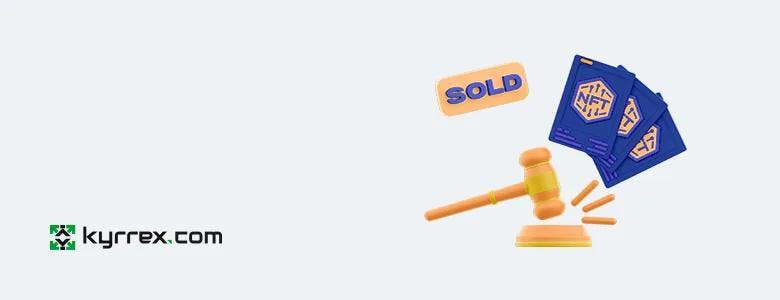
Another way to get in on the action is by investing in NFT stocks. Many companies are noticing how NFTs are transforming the art, gaming, and even financial industries, and they don’t want to be left out. Apart from brands leveraging NFT auctions to raise funds for charity, others are making it a part of their businesses. This means you can buy in on their stock and ride the NFT wave without owning actual NFTs.
What are NFT stocks? You must be asking.
They’re traditional stocks, but for companies with NFT investments. For example, Shopify and Visa are making a foray into the world of NFTs. Visa recently purchased a tokenized Cryptopunk asset worth $150,000 to understand better how they work. Shopify, on the other hand, is bringing NFTs mainstream by allowing some merchants to sell NFTs. So, you could trade the stocks of these companies on the New York Stock Exchange. Others include Vinco Ventures, Cloudflare, Dolphin Entertainment, and eBay.
NFT Investment: Finding the Right Gem
Spotting the next NFT to flip can be tricky business. It’s different from finding a good cryptocurrency project, buying its token, and waiting for its price to explode.
Going to the Explore page on OpenSea, you can see recent trade activities. Multiple and repeated sales from the same collection should tell you what’s hot and trending.
However, the most important thing you have to do when it comes to NFTs is research. Find out everything there is about a project. For example, who are the founding members? What’s its roadmap? And what’s its community size and strength.
Ideally, you should look for projects with the lowest supply of items in each collection. In addition, make sure the project has a high number of owners and a significant amount of increased trading volume. Finally, research on companies entering into the NFT space and consider going for those NFT stocks.
Conclusion
Whether or not NFT skeptics believe it’s a bubble waiting to burst, the market is still on a high. There’s no doubt the future holds a lot for these assets seeing that big brands are taking them mainstream. So, if you were thinking about investing in NFT assets, now is the right time to do your research and check out hidden gems.
